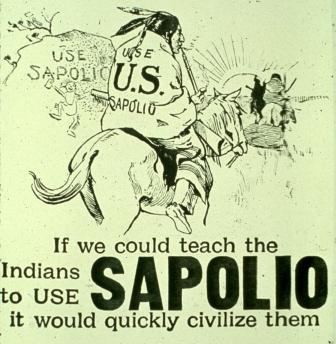MKTG 7326: Advertising & Promotion Strategy
DISCUSSION QUESTIONS
[discussion questions to accompany syllabus]
As stated in the syllabus,
a requirement for the class will be a commentary note on the
topics. Students are required to email to the instructor
comments that discuss the details of the articles and chapters
for each topic area after watching all of the taped lectures
on the topic. These should be composed of intelligent,
thought-provoking comments or questions on the articles and
their related discussions, and sometimes give your logical
rationale for why they disagree with on campus students or the
instructor. These should be about 700-1000 words each and
serve as a substitute for "discussion" that would take place
on campus, an essay that in the process of discussion answers
one or all of the discussion questions for the topic. This
will only be graded S-U, but you must have satisfactory work
on all of them to receive a grade in the class.
The Prime Direction: All
in-class discussions, test answers and homework assignments
must be approached from perspective of decision makers who are
presumed to not be dishonest, bigoted, lazy or dumb. This also
requires recognition that decisions are made by people working
in organizations, not anthropomorphic businesses or government
agencies, and that consumers are not mindless gullible fools.
SUBJECT TOPIC #1: Definitions,
history & nature of business organizations {return
to syllabus}
- How is advertising different from publicity?
- In the 19th century, manufacturers of unbranded products sold
everything they produced. To sell more, they would manufacturer
more products knowing that it would all sell. Under these
conditions, why did the first companies start to brand and
advertise their products?
- What are the advantages to using a full service advertising
agency? What discourages clients from hiring their own
specialized experts instead of employing of full-service agency?
- What is the difference between push and pull distribution
strategies in their use of communication tools? (It doesn't ask
what is the difference between a push and pull strategy. The
question is in their use of communications tools.)
- The American Association of Advertising Agencies likes to
claim that agencies provide a value in an "objective viewpoint."
How does an understanding of agency-client relationships prove
that such objectivity does not exist? (Do any of the assigned
readings list clients that fired their agencies for a lack of
objectivity?)
- What is a "media rep" company and what does it do?
- In keeping with the Prime Direction, what is the false
assumption behind "targeted" advertising agencies (or women or
non-white employees working within full service agencies) only
working on advertising for their demographic groups? (This leads
into perspectives needed for understanding communications theory
under Topic #3 and audience segmentation data under Topic #4.)
 TOPIC #2: Basic
Theories {return to
syllabus}
TOPIC #2: Basic
Theories {return to
syllabus}
- Why does the contemporary "marketing concept" or "marketing
orientation" provide a better basis for planning a marketing
communications campaign than a "production orientation"?
- Many people like to assert that consumers are manipulated by
advertising messages. Based upon what you know about
communication theory, how can you explain that this is not true?
- Finish this sentence in three words or less: "The mass
communications theory that provides a basis by which you would
expect subliminal advertising to influence consumer purchases
______ _____ _____ ." (Yes, an answer to this only takes
three words, or two if one is a contraction.)
- How do communications and persuasion theories explain why
threats of death and destruction and heads rolling down the
street might not be very persuasive to get young people to drive
safely? (This is not about message tactics. It is about
communications theory.)
- Inverted-Matthew Auto Repair has been running quarter-page
ads in the local newspaper for months. The managers intuitively
believe the ads get reader attention: models clad in
form-fitting lycra exercise suits stand under headlines that
proclaim, "We want your body." But newspaper reading potential
customers mostly report that they do not recall having seen ads
for the shop. Based upon communication theory -- such as the
concepts of the frame of reference, meaning and signs -- explain
how this can be happening!
- The communications model in the book states that there must be
an overlap in experiences between a communicator and audience.
Yet "affluent, well paid, college educated, white collar job
holding, largest cities living, relatively young people," the
description of the typical mass communications managers, is not
a description of the typical advertising audience members. If
targeted agencies are unnecessary attempts to create overlap
between communicators and audiences, how does being different
from an audience not foreclose a person's ability to communicate
with those people.
TOPIC #3: Communications
Goals/Objectives {return to
syllabus}
- Describe and explain a situation in which, after delineating
your possible target audiences, your best target is neither the
possible audience segment of the product's heavy users, nor the
segment of present and potential customers with the most people.
If not, who is the target and why should it be selected?
- Why must all national advertisers include demographic data as
part of their audience segmentation definition? Why are such
data grossly insufficient for other advertising-communications
decisions?
- What is the difference between a stereotype and a market or
audience segment?
- What is the immediate, primary and pragmatic value in setting
goals? If attaining communications goals does not always mean
that sales goals will be attained, why bother to set them? If
they do have a close relationship to sales, why not just measure
sales directly?
- When advertising is the only marketing mix element that
differs between firms, it is intuitively obvious that
differences in sales must be the result of advertising, yet the
text implies that communications goals would still be useful.
Why?
- Apply the principles of a good objective in writing a
communications objective for a leading brand of bicycles, and
explain why it meets the text's criteria for good goals.
Is a good objective "To tell as many people as possible that
bicycle riding is inexpensive fun for the whole family." Is this
a good objective for a marketing communications campaign? Why?
(Assess this by criteria for communications goals, NOT as a
message strategy.)
TOPIC #4: Budget
Setting {return to
syllabus}
- Explain why a budgeting method like objective-and-task is
more "information oriented" while percentage of past or future
sales and affordable methods are more "judgment oriented."
- If a manager states "I never know how much to spend on
advertising. My brand managers ask for a certain amount and I
never know if I am spending too much or too little."
Similarly, John Wanamaker, retail magnate of a time long ago,
famously said, "I know half the money I spend on advertising is
wasted, but I can never find out which half." Address his
comment in relation to various budget setting methods, noting
how (or if) one budget method is better than others to help
address this management issue?
- What does a "share of voice" approach to budget setting
presume about the spending levels of other companies in your
industry?
- How does the nature of advertising organizations and
agency-client relations help explain why most firms take a
top-down approach to decision making instead of assessing the
cost of attaining goals? This requires taking some of the
materials from topic 1 and applying it to the lectures and
content here. To answer this, you need to first be able to
answer this: (a) state how a budget would be calculated by a
task-objective approach; such as (b) what type of information
would be needed for this calculation; then indicate (c) what
type of expertise (i.e. job titles) would be best able to gather
and interpret that information; and therefore (d) assess how
modern agency-client relations play a role in this?
- Communications goals must be "realistic." What does this
requirement indicate in the following two situations:
a) You have carefully calculated the necessary advertising
appropriation (also called a budget) by an objective-and-task
approach and have come up with a figure that is grossly more
than the firm can afford to spend in the coming year (i.e. there
is no way the money can be obtained it is so out of line with
current resources). What do you do?
b) Is it situation any different when you are only slightly
higher than what financial officer and senior marketing managers
are willing to allocate? Why? What are your options?
TOPICS #5: Creative
Strategy (& Tactics as examples of strategy)
{return
to syllabus}
- Many advertising writers complain that research data inhibit
the production of "creative" advertising in that it imposes
restrictions on their creative work; to meet research-based
directives, they might not be able to win a creative award. They
say the most "creative" ads get the most reader attention
possible and therefore are the "best." Why are they right or
wrong?
- Why do the people in charge of making creative decisions make
so many expensive campaigns that fail to sell the product?
- Message strategy and tactics is known as the "creative
function." Does this mean that the best marketing communication
messages are prepared by the most entertaining and creative
people? For example, should Spike Lee, Woody Allen or other
successful and creative movie makers be given free reign to plan
message strategy and write/produce the resulting television
commercials? Why or why not?
- Based on basic concerns of creative strategy discussed in
class, what determines if an advertising idea would be the basis
for a good message strategy?
- What do the initials USP stand for, both literally and what
does it mean for determining a creative strategy? How does it
guide a decision for creative strategy to determine if and when
(in terms of strategy, not tactics): (A) When should a celebrity
be used as part of the message strategy -- this means a star
presenter, not an endorser, which is a tactic -- and when should
they be avoided? (It is not how they relate to the product
itself) (B) What makes a product appropriate for use of a sex
appeal or sexual images in the advertising? (It is not how the
product is "used.") (C) How can humor used as a tool of message
strategy?
- In his reviews of the advertising in "Advertrocities," Bob
Garfield found a common (and very basic) problem of strategy no
matter how well produced the ads might prove to be. What are
their problems? How do various awards for advertising contribute
to the problem?
TOPIC #6: Media
Strategy {return to
syllabus}
Remember, when studying topics #6, 7, 8 and 9:
For any advertising-supported vehicle, audiences have value only
insofar as they able to attract advertisers who might wish to
reach them. The success of a cable-TV network, radio station
format, special content magazine, ethnic newspaper or some web
delivery of news or entertainment is determined by their
advertising support. For this course, you must view the media
alternatives as a communications decision maker, not as an
audience member.

- Explain how the following are properly used in making
advertising decisions (some are repeated in later media
topics.): Gross Rating Points (GRP) in broadcasting vs. TRP;
circulation vs. readership; program rating; gross impressions;
CPM; TCPM.
- For just this room shown in the picture at the right, what is
the reach of your commercial if it is running at this time? In
terms of their usage in the business, what is the difference
between "reach" and "communications?"
- When a subscriber takes several days to read a magazine, what
does a media planner consider as the frequency of individual ads
in that magazine?
- Many advertising people feel media strategy is easy, and
buying is just a matter of being a good negotiator with the
guidance of an optimizer computer program. Why are such views
based on a mistaken view of media decision making?
- Assume a future time in which a media planner has direct
access to all available data, uses widely accepted standardized
terminology, and possesses the ultimate in computer computation
capability, thus eliminating any problems of information
overload, confusing data or conflicting terms. Why is it that
even in this situation, actual media strategy decisions would
not become straight-forward applications of the data in that
media strategy still require the insight of specialized
experts?
- How and when would a CPM comparison be improper?
- Why is it be easier to describe the characteristics of the
kind of people to be reached than to find an efficient media
plan to communicate with them?
TOPICS #7: Media
Selection--Broadcast
& Cable {return to
syllabus}
- Briefly discuss the fragmentation of radio and cable
television audiences and its implications as both a problem and
as an opportunity for media planning and tactics.
- How does audience fragmentation in broadcasting effect
audience measurement of these vehicles and potential "problems"
with the data. How does cable television complicate the
measurement of television audiences? (This is not a question of
the research method, or that people have remote controls to flip
channels!)
- "A national advertiser might buy spot TV spots." Define and
distinguish between the two underlined words. (What is the
difference between "spot tv" and "TV spots"?)
- You have decided to run a series of local radio
advertisements, using the same commercials and have to decide
between two options with the exact same total costs: (1) Average
frequency of target audience = 1.4, with a reach of 95% of the
target audience; or (2) Average frequency of target audience =
6.65, with a reach of 20% of the target audience. Which schedule
should you purchase?
TOPICS #8: Media
Selection--Print {return to
syllabus}
- What is the difference between magazine audience and magazine
circulation? Of what importance is this distinction? How may
applications of the two lead to difference conclusions about the
viability of different vehicles?
- Purchase of space that will only appear in the regional
edition of any magazine is more expensive in than a purchase of
the full national run in that it will have a higher CPM. So how
can this be quantitatively justified?
- Cover 4 of any publication will cost more than page 54 or any
inside page, so by definition, this is a higher CPM purchase.
How can this be quantitatively justified? (Remember, this is not
about individual users of the vehicle, but what the media buyer
is purchasing.)
TOPICS #9: Media
Selection--Supplemental
Media {return to
syllabus}
Unlike magazines, newspapers, TV and radio –
what are increasingly referenced as the "old media" – the
audiences for the supporting vehicles are not gathered for some
interest or purpose other than advertising. Except for the
Internet, any of these vehicles potentially purchased would
contain advertising without any editorial content. 
- Why do the non-traditional media defy audience measurement?
How are the measurement possibilities miseading for Internet,
buzz agents or other up-and-coming vehicle options?
- What is the difference between GRP statements for outdoor
advertising and those for broadcasting?
- Assume that after you graduate you set yourself up in a direct
mail advertising-service business. You offer to plan and execute
direct mail advertising campaigns for retailers, local clubs,
hospitals and other local organizations. At lunch one fine day,
a local businesswoman tells you that she thinks that most of the
money spent on direct mail is wasted because most of the mail
that comes to her is immediately thrown in the wastebasket. She
is confident that the same practice is followed by the great
majority of people. If that is true, she reasons, advertisers
would be foolish to spend much (if any) money in direct mail.
What is your response?
- What are the advantages and disadvantages of advertising
specialties as an advertising medium. How does communication
theory apply to the selection of an "optimal" specialty for a
firm? What if the product carrying the message is not one that
is useful for the target audience? And just what is meant by
"useful?"
TOPICS #10: Sales
Promotion
& Publicity {return to
syllabus}
- What is meant by the distinction between sales promotion
moving the product toward the consumer while advertising moves
the consumer toward the product and how does this distinction
help guide determining the "value" of a planned sales promotions
effort?
- How does a publicist measure his or her effectiveness in the
job and how is this comparable to advertising time or space
buyers' reach estimates?
- What determines if communications strategy can make use of
publicity as an effective sales tool? Explain.
- Why do many public relations specialists consider their job
to mostly involve publicity control and why are they wrong?
TOPIC #11: Research--Measuring
Effects
& Effectiveness {return to
syllabus}
- Commercial A copytested slightly better than copytest B, but
the creative director believes that, unlike A, the animatics do
not give a good representation of what commercial B would look
like after final and production. What research terminology
explains what she is saying about the copytest? How would you
choose which commercial to produce and use in the campaign?
- Weilbacher ("The Enigma of Copytesting" electronic handout)
describes a common basis for selecting a copytest method that he
also says does not have them always selecting the method which
would provide the most important information for
decisions. How did he say they usually select the research
approach for copytesting, (from his comments and, more broadly,
from class and lecture supplements), what should be the basis
for choosing the research methodology used to ascertain
potential effectiveness for any particular marketing
communications effort, and why might a research method chosen in
this fashion provide a valid
reason for creative people to ask that resulting data be
ignored?
- While he concedes that there is a common basis for selecting a
research method for copytesting might be an exhibition of
industry wisdom, yet he immediately notes from industry practice
that disproves this as a possibility. What would show
industry-wide wisdom and what reality illustrates that it does
not exist?
- Discuss a proper use (and limitations) of the following
devices: How or when are (or are not) devices such GSR
meter; brain-wave meter; eye-movement camera valid measures of
advertising effects and effectiveness?
- What is the difference between media reach numbers and a
"noted" or "seen associated" score?
TOPIC #12: Government
Regulation
& Business Self-Regulation {return to
syllabus}
{return to
syllabus}
- As the economy hit the skids in 2008, the housing bubble
popped and financial markets imploded, former Federal Reserve
Board chair Alan Greenspan went before Congress to apologize. As
an advocate of blanket and deregulation of financial businesses
of the prior two decades, he was "surprised" that competition
and self-regulation were inadequate to prevent financial product
businesses from acting improperly. Why should he not have been
surprised? What is power of self-regulation when government
regulation does not exist?
- Your advertising campaign is ready for launch. The NAD has
contacted you with a complaint that your ads are deceptive. You
reply that the claims in question are adequately substantiated,
but the NAD does not accept your arguments. What are your
options and how do you evaluate them?
- Your new national advertising campaign that is planning on
heavy use of television is ready for launch. However, CBS has
decided that they will not run your commercial because they
consider it deceptive, even though there isn't the slightest
indication from your legal staff that the ads would run afoul of
the FTC. You show all of your substantiation to the Standards
and Practices Vice-President, but that person does not consider
it adequate. What are your options and how do you evaluate them?


 TOPIC #2: Basic
Theories {return to
syllabus}
TOPIC #2: Basic
Theories {return to
syllabus}


 {return to
syllabus}
{return to
syllabus}